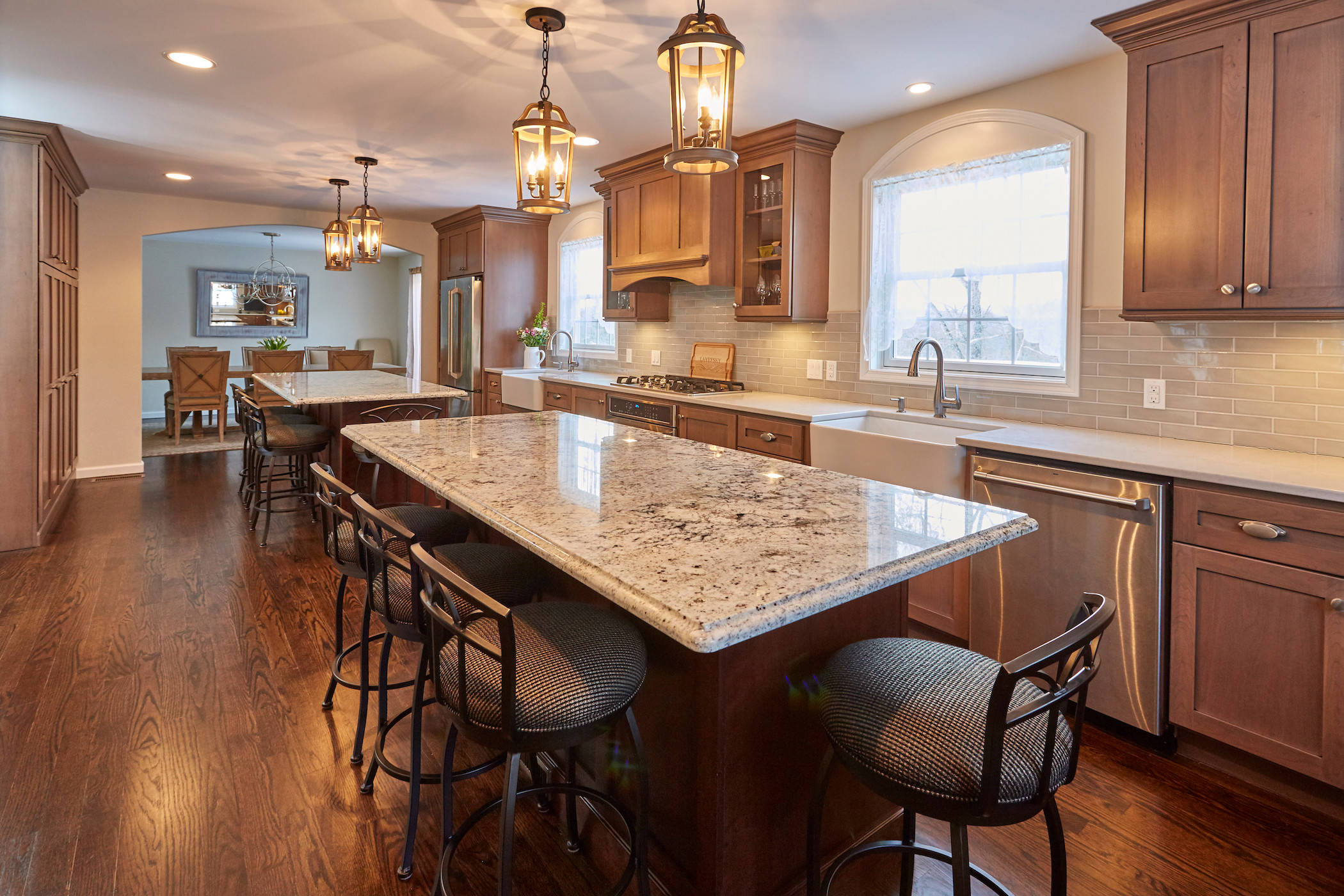Choosing the Right Granite for Brown Cabinets

Selecting granite countertops to complement brown cabinets requires careful consideration of several factors. The right granite can elevate the kitchen’s aesthetic, while the wrong choice can create a clashing and unbalanced design. This section explores practical considerations for choosing granite, focusing on durability, maintenance, edge profiles, and overall design harmony.
Granite Types, Durability, and Maintenance
Granite’s natural variations offer a wide range of colors, patterns, and veining. However, not all granites are created equal in terms of durability and maintenance. Understanding these differences is crucial for making an informed decision. The following table provides a comparison of several popular granite types.
| Granite Type | Durability | Maintenance | Color/Pattern |
|---|---|---|---|
| Black Galaxy | High; resistant to scratches and stains | Regular sealing recommended; easy cleaning | Deep black with flecks of gold and silver |
| Uba Tuba | High; relatively resistant to scratches and stains | Regular sealing recommended; easy cleaning | Greenish-brown with subtle veining |
| Santa Cecilia | High; resistant to scratches and stains | Regular sealing recommended; easy cleaning | Beige with dramatic brown veining |
| Giallo Fiorito | Moderate; susceptible to etching from acidic substances | Regular sealing crucial; careful cleaning required | Yellow with brown and white veining |
Countertop Edge Profiles and Aesthetics, Granite for brown cabinets
The edge profile of the countertop significantly impacts the overall visual appeal. Different profiles suit various kitchen styles and cabinet colors. Consider these four examples:
Granite for brown cabinets – Eased Edge: This classic profile features a slightly rounded edge, providing a soft, understated look. It’s versatile and complements both traditional and modern kitchens. Imagine a gently curved edge, smoothing the transition between countertop and cabinet.
Beveled Edge: A beveled edge is angled, creating a sleek, contemporary look. The angle adds a touch of sophistication, especially effective with darker granite and brown cabinets. Picture a sharp, clean angle along the countertop’s edge, reflecting light subtly.
Ogee Edge: The ogee edge features a graceful S-curve, offering a more ornate and traditional appearance. This profile adds elegance and works well with more elaborate kitchen designs. Visualize a flowing, double curve that adds a sense of movement and sophistication.
Bullnose Edge: A bullnose edge is rounded over, creating a smooth, comfortable edge. This is a safe and practical choice, especially in homes with children. Think of a completely rounded edge, providing a soft and welcoming feel.
A Step-by-Step Guide to Granite Selection
Selecting granite involves a holistic approach, considering the interplay of various design elements. A systematic process can ensure a cohesive and aesthetically pleasing result.
- Assess Existing Elements: Analyze the existing brown cabinets’ shade (light, medium, dark), their finish (glossy, matte), and the overall kitchen style (traditional, modern, rustic).
- Granite Selection: Based on the cabinet color and style, choose granite samples with complementary colors and patterns. Consider whether you prefer a contrasting or harmonious look. For example, lighter brown cabinets might pair well with a darker granite, while dark brown cabinets might benefit from a lighter granite with contrasting veining.
- Backsplash Material: Select a backsplash material that complements both the cabinets and the chosen granite. A neutral-colored backsplash can provide balance, while a patterned backsplash can add visual interest. For instance, a white subway tile backsplash offers a clean, classic look with most granite types.
- Flooring Considerations: Ensure the flooring complements the overall scheme. Flooring materials such as hardwood, tile, or vinyl should create a unified design flow. A wood floor can add warmth, while tile can offer durability and easy cleaning.
- Lighting Impact: Consider how lighting will affect the appearance of the granite. Natural light can enhance the granite’s colors and patterns, while artificial lighting can influence the perceived tone. Proper lighting is essential to highlight the chosen granite’s features.
- Professional Consultation: Seek advice from a kitchen design professional or a granite supplier. They can offer valuable insights and help you make informed decisions.
